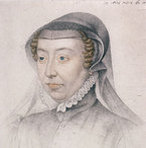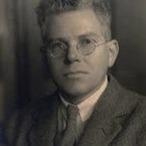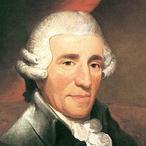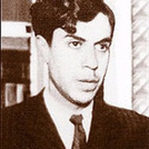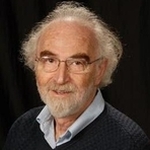|
Professor Gerald Pollack's new book, The Fourth Phase of Water, is an interesting, accessible and engrossing journey into the murky world of water science. His theories explain things as diverse as cloud formation and osmosis, interfacial water structure and the properties of wet sand. A must-read for anyone interested in the science of water. 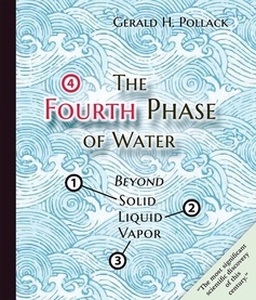 Some time ago, I wrote about the interesting new theories from Professor Gerald Pollack regarding a fourth phase of water, distinct from the usual solid (ice), liquid (water) and gaseous (vapour) phases. This new phase, liquid crystalline water, has many fascinating properties, and goes a long way in explaining many of the anomalous properties of water, and of those things which contain a high percentage of water as a part of their make-up. Pollack has now produced a book explaining, and elaborating on, these theories, called The Fourth Phase of Water: Beyond Solid, Liquid and Vapour. Pollack's book goes a long way towards making this complex scientific field understandable to the interested layman, while still being a serious study of the conclusions drawn by Pollack and his Lab about the nature and properties of the proposed Liquid Crystalline phase of water. After his historical preamble, Pollack starts the book with a very useful 'Bestiary': "A reader's guide to the species that lurk within the mysterious aqueous domain". The descriptions therein of the Hydronium Ion, EZ Water, the Hexagonal structure of Ice, and the nature of charge distribution in a bubble and a droplet, all give the reader basic yet vital information with which to proceed. Pollack uses the first few chapters to clarify and expand on the ideas which he has developed through his lab and his talks up to the publication of this book: ideas such as Interfacial water (EZ water); the water battery; the charge separation that occurs between bulk and EZ water; and the structure of Liquid Crystalline water. In later chapters, Pollack dives into some of the more interesting ideas, such as: how molecules with the same charge are attracted to each other, and how this can account for cloud formation and the different properties of wet and dry sand; how osmosis occurs; the properties of protonated water; how rocks can skim across the water surface; and the role of EZ water in the resolution of the Energy Paradox inherent in the formation of Ice crystals. Now, I'm not going to ruin the fun of finding out what Pollack thinks about these things: you will have to buy the book for that. However, there is much information out there on the web if you want to learn more about the ideas in this fantastic book. It is definitely worth a read, whether as an interested or curious layman, or a serious science student with an open mind and an inquisitive nature. The video below is from a recent TEDx talk about the Fourth Phase of Water given by Pollack. Check it out!
0 Comments
Water. Without it, we would not exist. Covering nearly 71% of the world’s surface, it is one of the key building blocks of life on Earth. We think we know all about it, how it works, and what it does. But Gerald Pollack, Professor of Bioengineering at the University of Washington, Seattle, is sure we don’t!
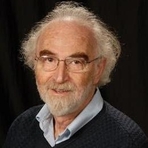 Prof. Gerald Pollack Prof. Gerald Pollack
Ice, water and vapour: the three phases of water. Sounds simple, doesn’t it? Not so, according to Gerald Pollack. Research conducted by Pollack and his associates has found evidence for a fourth phase of water which could have far reaching effects for our current understanding of the substance, its role in biological systems, and its application in technologies including energy, desalination and filtration. This fourth phase, the “Liquid Crystalline” phase, is the result of an, as yet, undetected extension of multiple layers of structured water molecules which occur at hydrophilic (water loving) surfaces, and at the air/water interface.
So, what is Liquid Crystalline water, and how and when is it formed? Well, Liquid Crystalline water differs from bulk water in that: it has retained a systematic ordering of molecules which causes an Exclusion Zone from which various substances are displaced. It also has a significant negative charge, and can form semi-solid structures which can carry normal bulk-water. It is more fluid than the rigid structure found in ice, but the strong attraction between the electropositive Hydrogen atoms and the electronegative Oxygen atoms causes a weaker, more fluid chain of molecules to form, the length of which can be surprisingly large. The extent of the Exclusion Zone was discovered during an experiment in which a suspension of latex microspheres (i.e. an aqueous solution of microspheres large enough to eventually produce sedimentation) was poured onto a Polyvinyl alcohol gel (a hydrophilic substance). The prevailing scientific paradigm states that a small number of layers of order would occur at the gel/suspension interface: perhaps about two or three [i]. What Pollack observed, however, was “a few million layers” [ii]of ordered water. Further experiments produced an Exclusion Zone visible to the naked eye. The proof for this came from the observation that the "microspheres were distributed nonuniformly" and "were almost completely excluded from the region near the gel surface. Far from the surface” [iii] leaving acrystalline-like area, where no microspheres were detected.
The Liquid Crystalline water has a significant negative charge to it [iv], with a noted abundance of positive charge in the adjacent area of bulk water. While dipole molecules such as water have electropositive and electronegative areas, they don’t have an overall negative charge. When the Exclusion Zone (EZ) was analysed spectroscopically, it was found to absorb light at 270 nanometres “which is typical of electrons set up in a ring structure (n electrons)” [v] such as can be found in Benzene, Pyridine and Phenol.
Unlike ice, which has a rigid structure, the hexagonal layers found in Liquid Crystalline water are far more densely packed. This can occur as the protons which “glue” the layers together in ice are expelled from the Liquid Crystal into the bulk water, forming an area of positive charge just outside the Exclusion Zone. In fact, an increase of pH (i.e. making the water more alkaline) within certain parameters has been shown to “greatly enhance the rate of Exclusion Zone formation.” The resulting distinct areas of negatively charged EZ water, and positively charged bulk water, are a potential source of energy: in effect, a water battery! As Pollack says on his website: “The scientific underpinning of this separation is extremely interesting, and is revealing as much about the structure, chemistry, and physics of water as about the prospects of obtaining clean electrical energy from water.” [vi] Where does the energy come from to induce this ordering? The simple answer is: light! Energy coming from UV, visible and Infra Red wavelengths all produce significant molecular ordering, with the greatest amount coming from the Infra Red spectrum. Pollack states that “five-minute exposure to radiation at 3.1 µm (corresponding to OH stretch) causes exclusion-zone-width increase up to three times.” [vii] It is believed that photons cause the bulk water to reorganise into the more structured, crystalline form, though how this occurs is still being studied. Pollack states that “this light-induced charge separation resembles the first steps of photosynthesis” [viii] and indeed, it seems that this theory could give us a much better understanding of many biological processes. Pollack’s work raises important questions in the realm of cell biology, particularly with respect to cell structure and the ingress and egress of ions to and from the cell. The prevailing wisdom states that “pumps transport solutes across the cell boundary against their respective concentration gradients” while “Channels permit the solutes to trickle back in the opposite direction.” [ix] Pollack questions these long-held basic features of cell function in his book, Cells, Gels and the Engines of Life (2001). He also questions the lever-arm hypothesis in muscular motion, in his book: Muscles and Molecules: Uncovering the Principles of Biological Motion (1990). In both instances, Pollack introduces Liquid Crystalline Water as an alternative player in the game. Pollack suggests that the EZ layer of structured water has a key role in the following two examples. The first is the “Floating Water Bridge” [x]. The floating water bridge is a “stiff, cylindrical tube, with an annulus and core structure” [xi] which occurs when a large potential difference is applied between two beakers of pure water. It exhibits a “simultaneous bi-directional flow of water and charge” [xii], the positive charge flowing through the rotating outer annulus, while the negative charge flows through the core. When the beakers are separated, up to a distance of about 25mm, a cylindrical tube is formed, seemingly impervious to gravitational forces, which transports fluid and charge between the beakers, resulting, after time, in one beaker of high pH, and one of low pH. Fuchs et al. Found that when “the voltage is shut off instantaneously, the surface tension turns the bridge into a series of falling droplets.” [xiii]
The second example occurs at the air/water interface: the "Tent Phenomenon." The tent phenomenon occurs "when a capillary tube is touched to the surface of the water above a microsphere-free region."[xiv] The layers of water in the microsphere-free region are pulled upwards, in a tent-like shape. However, Pollack goes on to say that: "thousands to millions of water layers beneath the capillary tube, the microspheres are pulled up in exactly the same shape." [xv] The fact that this occurs suggests that "there could be vertical structuring within the microsphere-free region [which] could provide evidence that the water at the air-water interface is more extensively structured than in bulk." [xvi] The experiment also noted that as "the capillary tube is moved up and down or across the surface of the water, the microsphere “tent” beneath it moves in the same way." [xvii]
There are many applications for Pollack’s theories. Three major new technologies being looked into now are: filterless filtration, bases on the property of EZ water to “repel impurities” such as arsenic [xviii] and bacteria, ”leaving a layer of pure water" [xix]; desalination [xx]; and the extraction of energy from a “liquid water battery” [xxi]. More esoterically, Liquid Crystalline water could also have implications for such phenomena as “the laying on of hands” in spiritual healing and of “earthing” [xxii]. Finally, with Liquid Crystalline water in the frame as one of the key components of Photosynthesis, Pollack’s work could lead us closer to an understanding of the origins of life [xxiii].
You can keep up to date with Pollack’s work at the Pollack Laboratory website. He will also be bringing out a new book towards the end of 2012 called “The Fourth Phase of Water: Beyond Solid, Liquid, and Vapor” a preview of which you can see on the Pollack Laboratory website.
[i] This is due to the current belief that, as the layers move outward from the interface, they start to vibrate. This vibration, induced by thermal motion, was believed to be the cause of the finite extent of the structured layers water molecules.
[ii] Transcript of A Special Interview with Gerald Pollack about Structured Water. Dr Mercola and Prof. Pollack. Mercola.com. 29 Jan 2011 [iii] Ibid. [iv] Surfaces and interfacial water: evidence that hydrophilic surfaces have long-range impact. Zheng JM, Chin WC, Khijniak E, Khijniak E Jr, Pollack GH.Sci. 2006; 127: 19-27. [v] A Fourth Phase of Water starts to Gel. University of Western Ontario website. [vi] Pollack Laboratory Website. Research themes. Water-Based Technology. [vii] Pollack Laboratory Website. Research themes. Water Science. [viii] Ibid. [ix] Cells, Gels and the Engines of Life: A New, Unifying Approach to Cell Function. Gerald H. Pollack. 31/05/2001. pp 4. [x] The floating water bridge was first reported by British Engineer William Armstrong in a public lecture in 1893. It was then subsequently forgotten about for a century. It was he who discovered the charges in the annulus and the core. He was also an advocate of solar power and renewable energy. [xi] Plasma Behavior in the Floating Water Bridge & Biology. Robert Johnson. Electric Universe 2012 Conference: The Human Story. [xii] Ibid. [xiii] The Floating Water Bridge. J. Phys. D: Appl. Phys. 40 (2007) 6112-6114. Fuchs, Elmar C.; Woisetschläger, Jakob; Gatterer, Karl; Maier, Eugen; Pecnik, René; Holler, Gert and Eisenkölbl, Helmut. [xiv] New Observations at the Air-Water Interface. Journal of Undergraduate Research in Bioengineering. A. Jolene Mork, Gerald H. Pollack. [xv] Ibid. [xvi] Ibid. [xvii] Ibid. [xviii] Arsenic in well water is one of the biggest killers in Bangladesh. Pollack’s new technology could have massive implications for people in rural parts of the country. See this BBC News Report for further details of the crisis in Bangladesh. [xix] Dirt-repelling tube promises cheap, pure water. New Scientist Magazine. Jon Evans. 15 July 2008. [xx] Pollack Laboratory Website. Research Themes. Water Based Technology. [xxi] Ibid. [xxii] Transcript of A Special Interview with Gerald Pollack about Structured Water. Dr Mercola and Prof. Pollack. Mercola.com. 29 Jan 2011. [xxiii] Pollack Laboratory Website. Research Themes. Origin of Life. |
Categories
All
Archives
November 2013
|
MOST VIEWED POSTS
© James Edward Hughes 2013
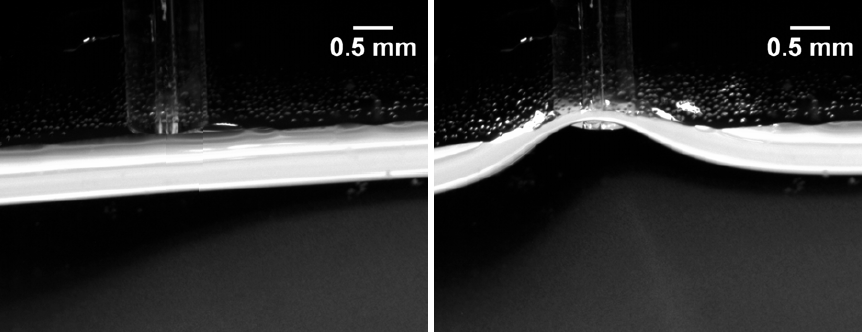
 RSS Feed
RSS Feed
